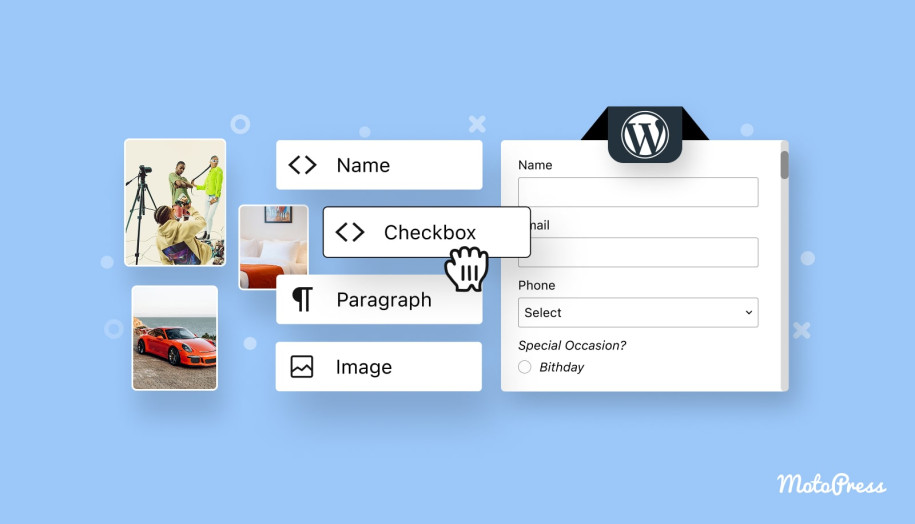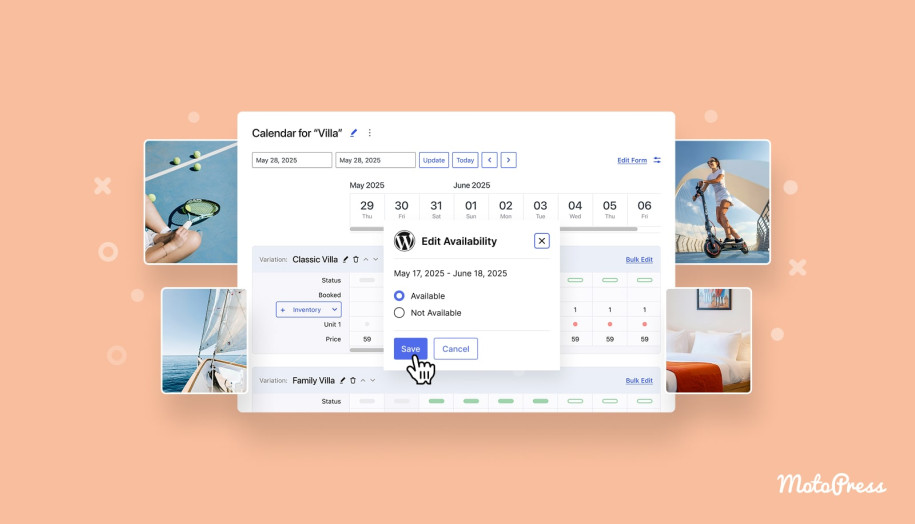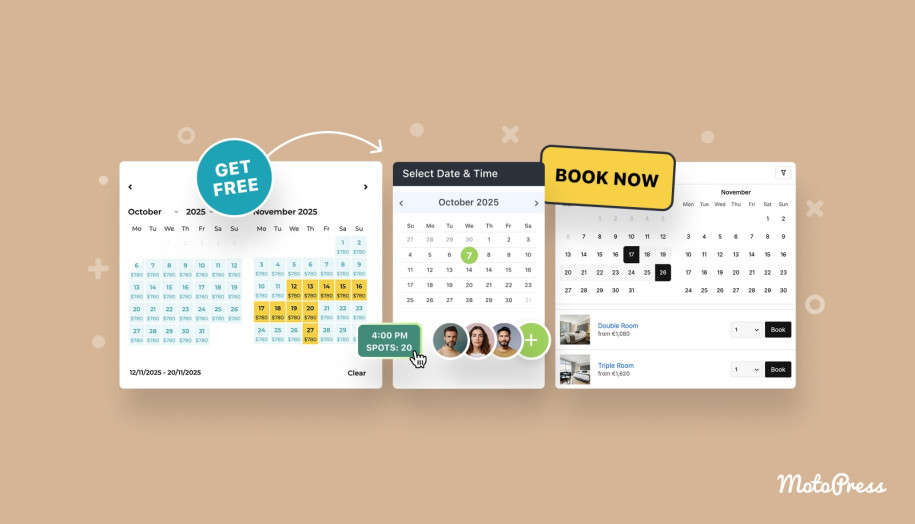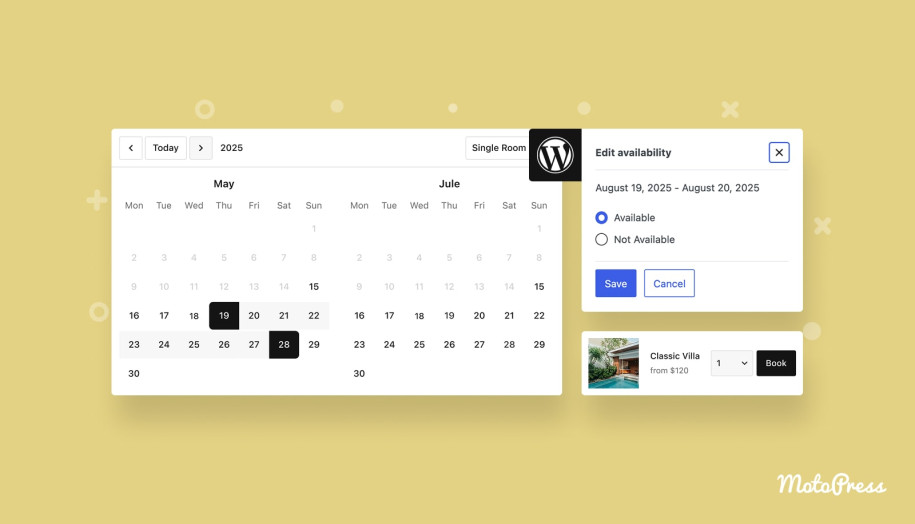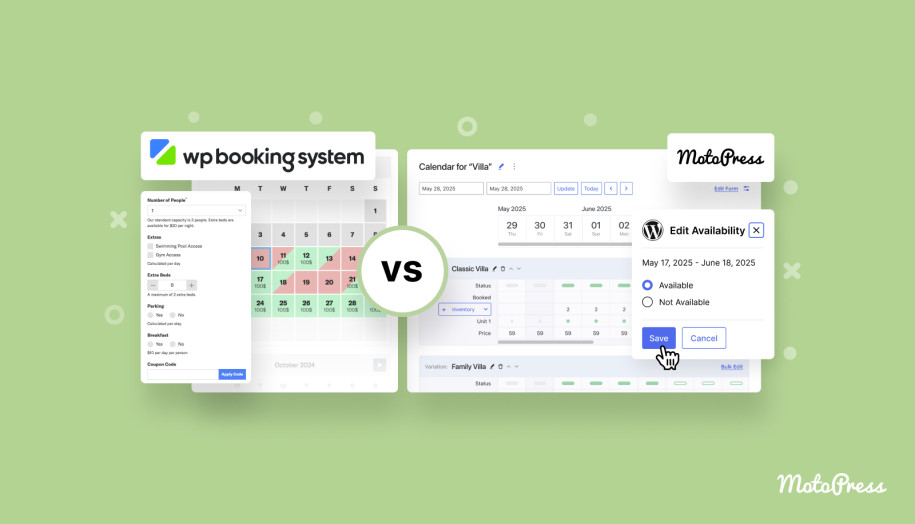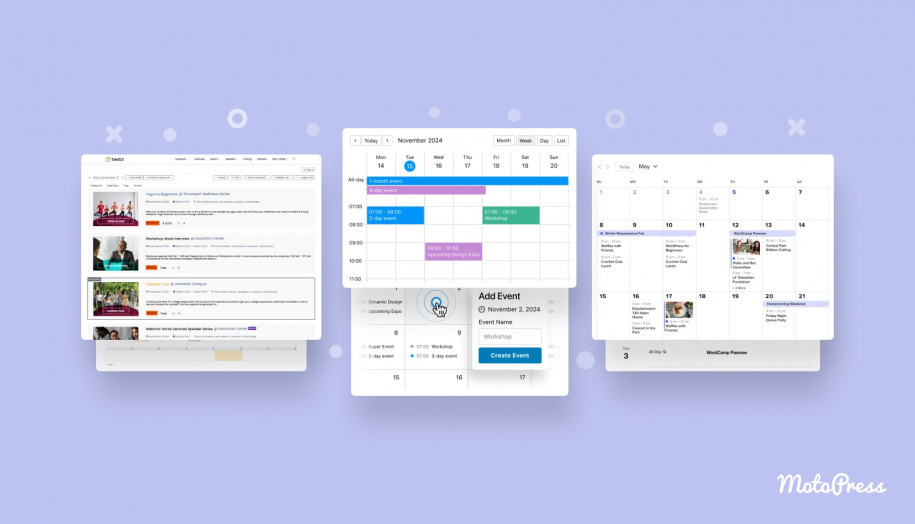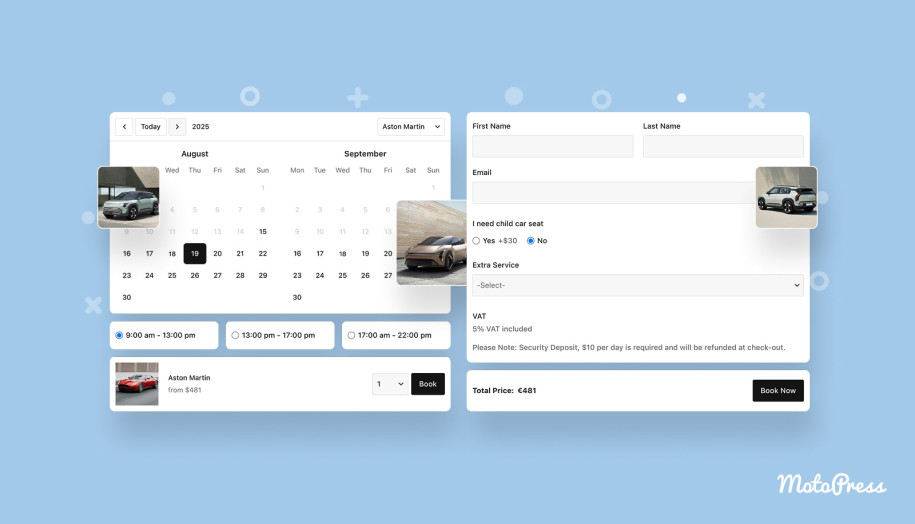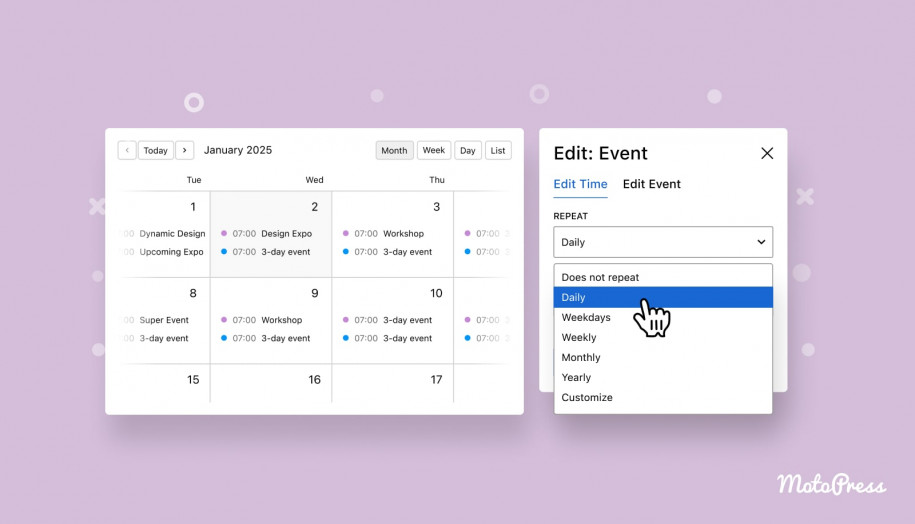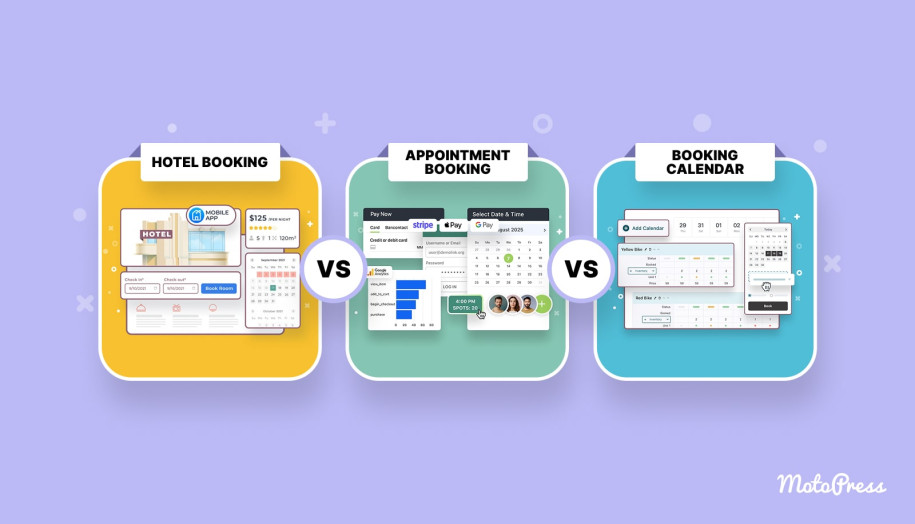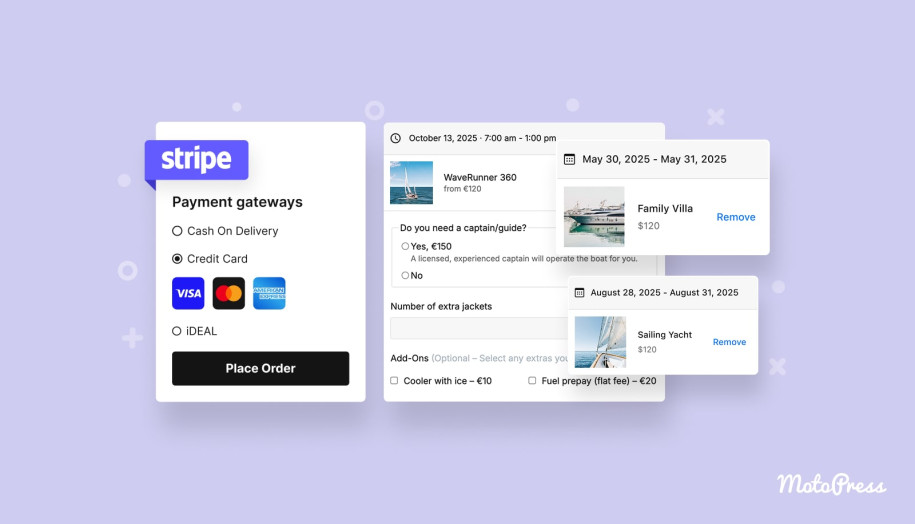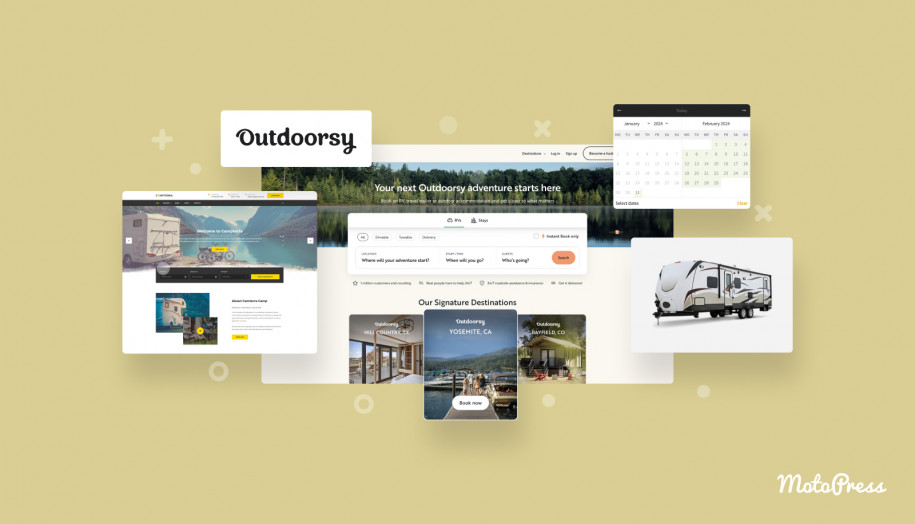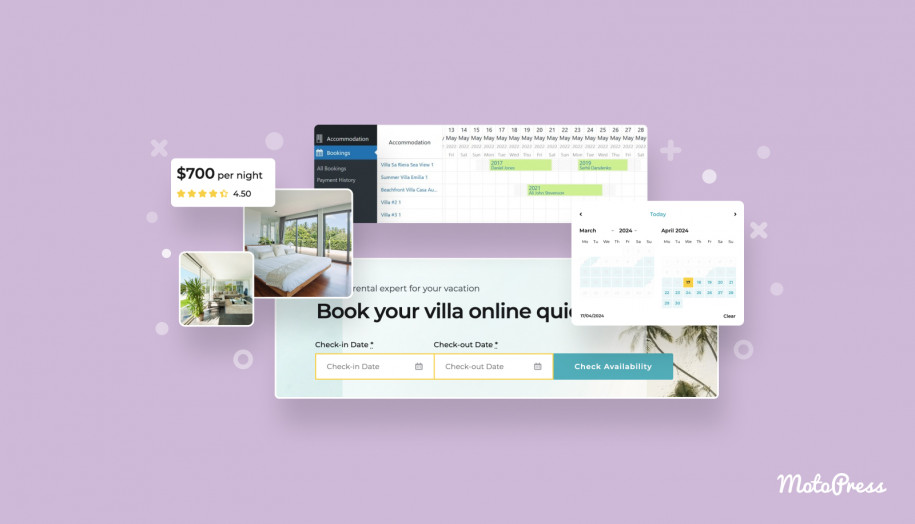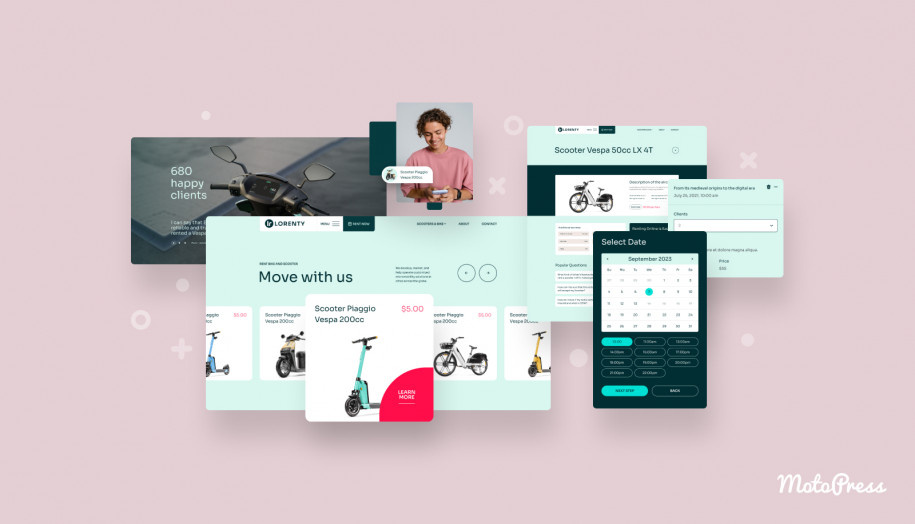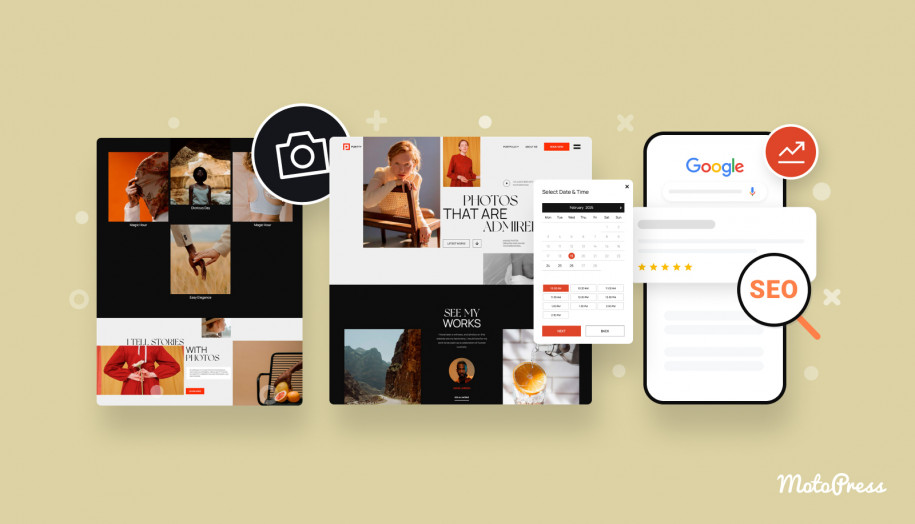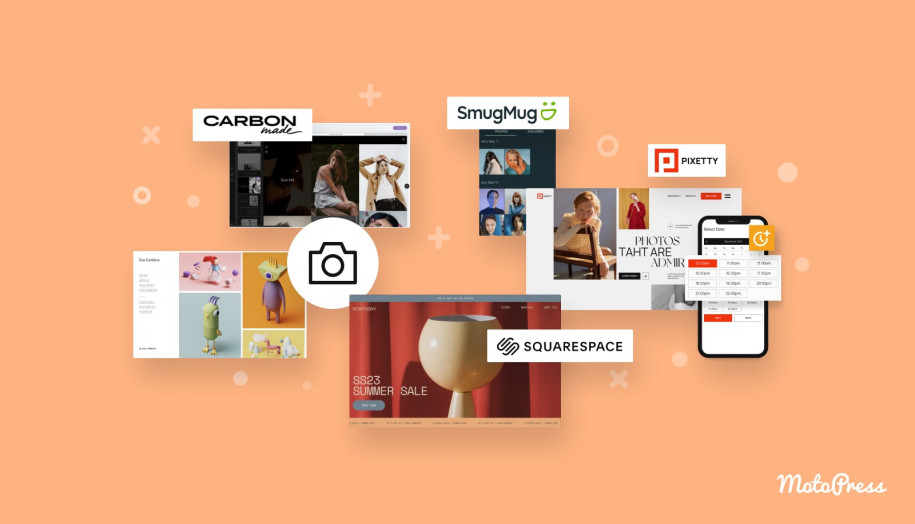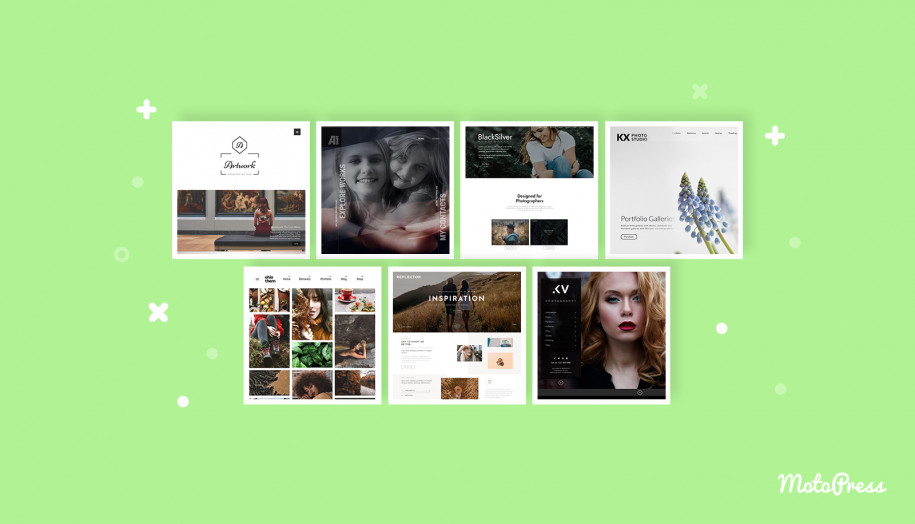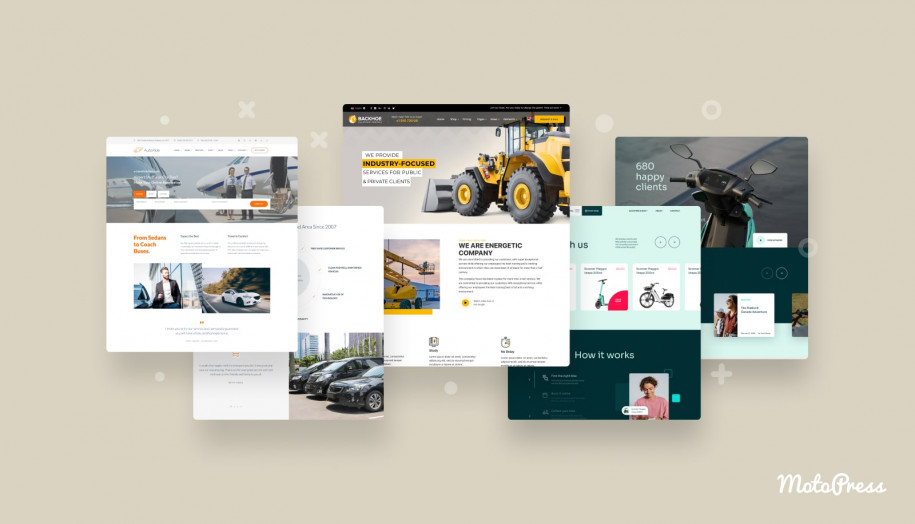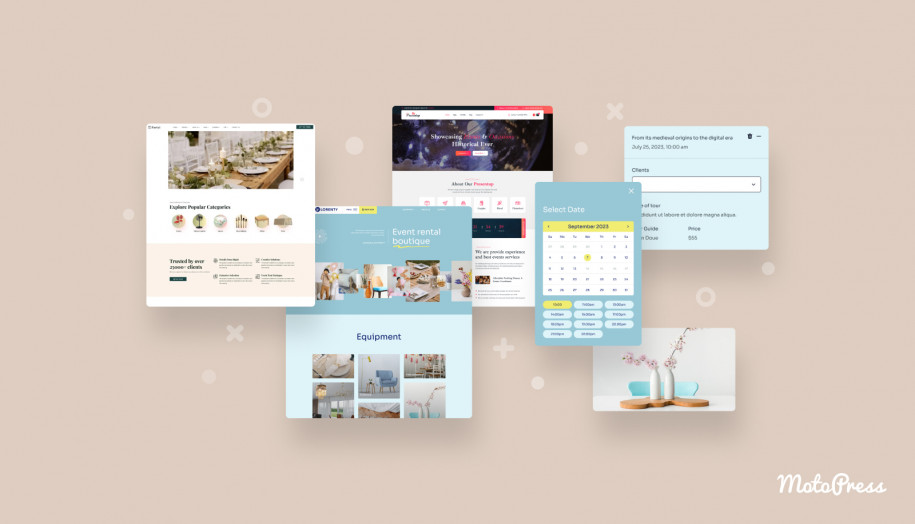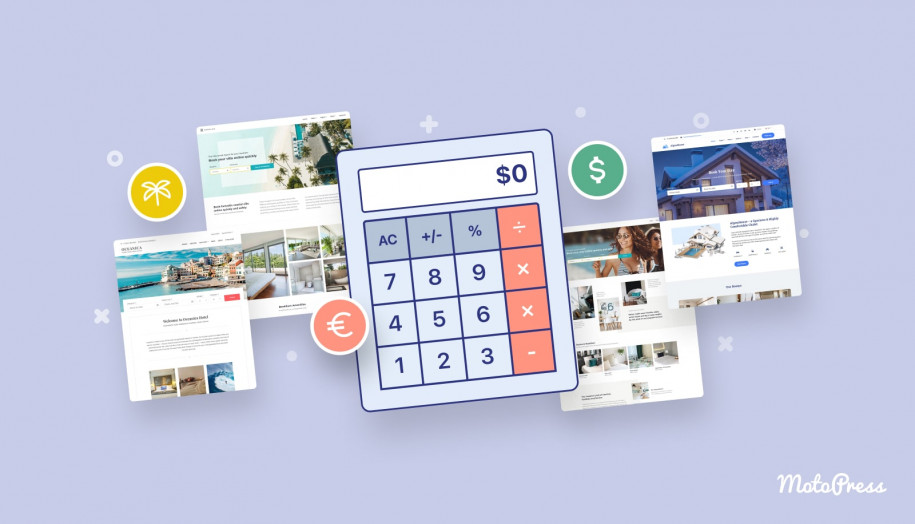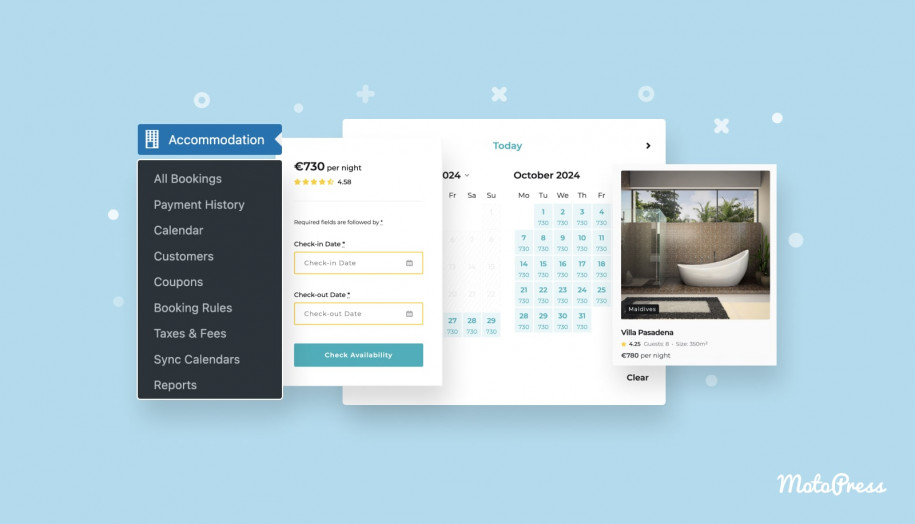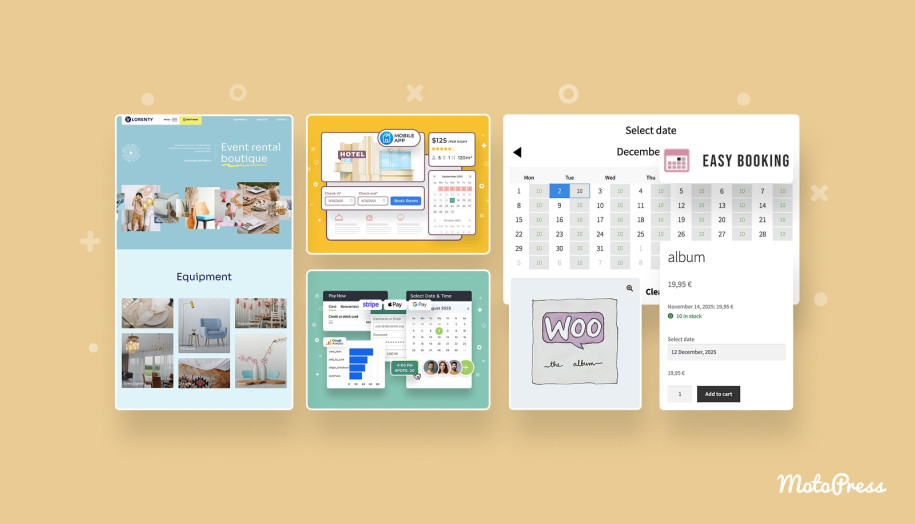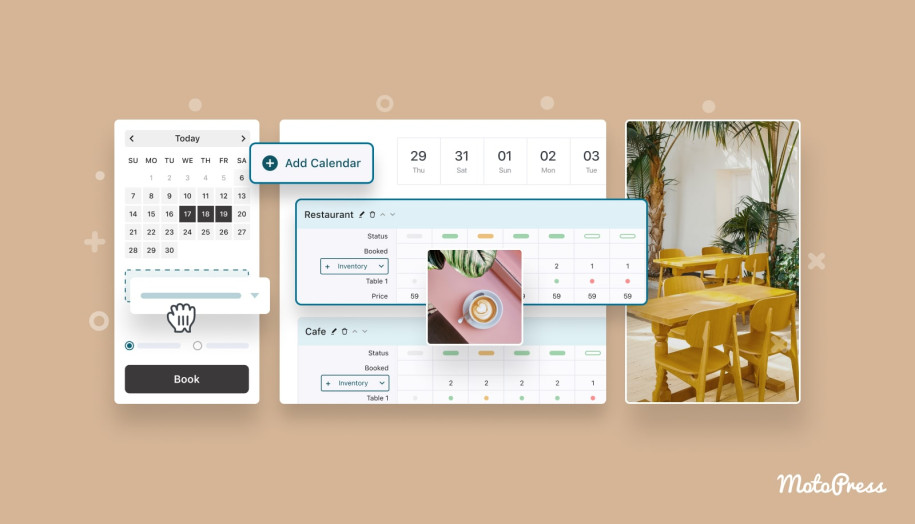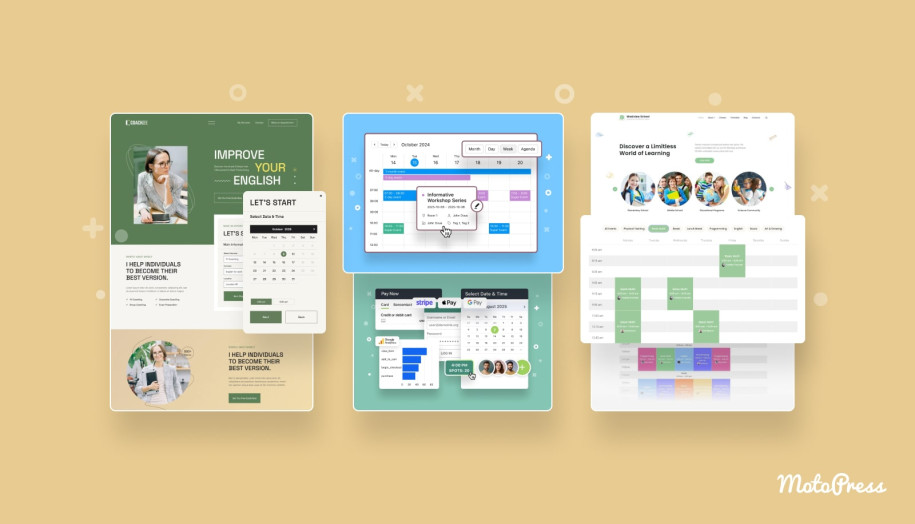How to Create a Simple Booking Form with a Calendar in WordPress
Table of Contents
Let’s face it – managing bookings through email threads or chat messages can be messy. You spend time checking availability, confirming dates, and sending reminders. Are you building your website with WordPress? That’s where an online WordPress booking form comes in handy!
A built-in calendar with a smart booking form lets your customers book instantly while you stay in control of your schedule. Let’s walk through a step-by-step guide to build flexible forms for any rental type right inside WordPress!
Why Add A WordPress Booking Form?
A booking form does much more than collect information about your customers. Here’s why adding one can make a real difference:
- Automatic scheduling: New reservations appear instantly in your calendar.
- Better customer experience: Visitors can see what’s available and book on the spot.
- Instant payments: Connect online payment gateways to get paid right away.
- Everything in one place: Manage bookings, payments, and customer info from a dashboard of the WordPress booking form plugin.
- Looks professional: A booking form with a calendar makes your site look complete.
Bonus Tip: The easier it is for people to book, the more likely they are to choose you.
What Do You Need Before You Start?
Before we dive in, make sure you have a few essentials ready to go:
- A working WordPress website.
- The WordPress Booking Calendar plugin is used to set up a seamless booking process.
For this guide, I will use the MotoPress Booking Calendar with a highly visual calendar interface. It allows you to build and manage calendars for different rental periods (hourly, daily, and nightly).

This plugin provides a drag-and-drop form builder that lets you add or edit fields like Name, Email, Country, and even dynamic pricing options – all visually inside WordPress.
To install and activate the plugin:
- Go to your WordPress dashboard > Plugins > Add New.
- Upload the MotoPress Booking Calendar zip. file or search for it (if using the free version).
- Click Install Now, then Activate.
- The plugin adds the ‘Calendars’ menu to your WordPress dashboard.
How to Create a Booking Form in WordPress: Step-by-Step Guide
Whether you rent a studio by the hour, a car by the day, or an apartment by the night, you’ll follow the same basic steps. You’ll just adjust the form fields and booking period to match your business.
Each example below walks you through how to do that using MotoPress Booking Calendar!
Add a Calendar
Before adding a WordPress booking form, you should create and set up a calendar.
Navigate to Calendars > Add Calendar. In a pop-up window, add a Label and choose the booking type (hourly, daily, or nightly). Then, click ‘Continue’.
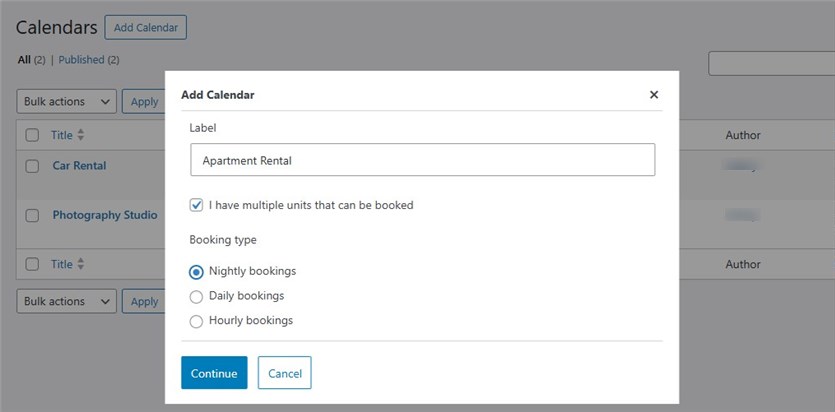
Launch a quick start guide that will guide you through the visual calendar interface:
- Date Range;
- Edit Calendar Page;
- Rental Items (Variations) & Inventory;
- Bulk Edit Button;
- Adjust Availability and Pricing;
- Edit Booking Form;
- Status Legend.
Form Editor Walkthrough
Once calendars are set up, it’s time to take care of the form. The Form Editor is split into 3 main zones:
1. In the center area, you’ll see a live preview of your form with sections for Common Fields and Unique Fields.

2. On the left side, you’ve got the list of all available fields.
- Customer Name
- Customer Email
- Customer Phone
- Short Answer
- Number (adjusts the total price)
- Checkbox (adjusts the total price)
- Price Adjustment (adjusts the total price)
- Multiple Choice (adjusts the total price)
- Dropdown
- Long Answer
- Phone
- Country
Since these are blocks, you can drag and drop them into the Common Fields Section. If you add them to a Unique Fields Section, they will appear only if the customer selects this variation.
Layout blocks include:
- Paragraph
- Image
- Columns
- Group
- Row
- Stack
- Grid
- Separator
- Spacer
3. On the right, you’ll see the form settings. Here, you can set a custom currency for this form and add Notifications.
General Booking Form Example
With the WordPress Booking Calendar by MotoPress, you can create a versatile form for all calendars or a unique booking form if needed.
If you choose the first option, go to Calendars > Forms > Add New Form.
By default, the form includes the Name, Email, and Phone fields.
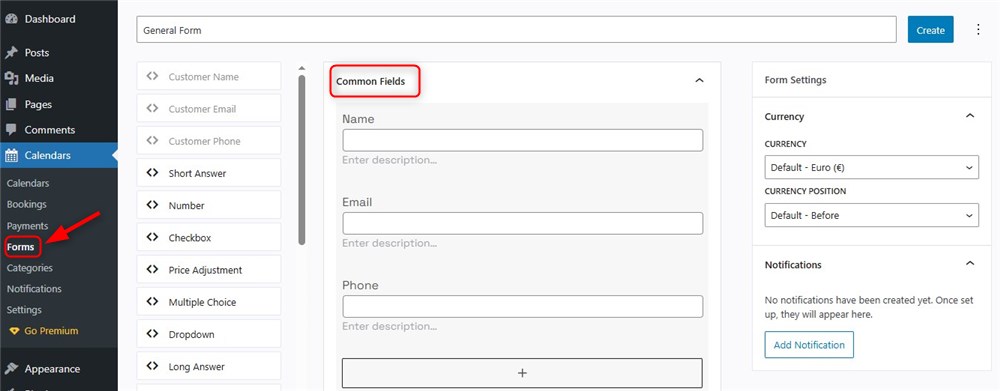
Use the ‘plus’ icon to add the needed fields or blocks. You can also make them required or optional. For example:
- Country Field;
- 2 Checkbox Fields (for Terms & Conditions and Subscribe to Our Newsletter);
- Separator Layout Block.
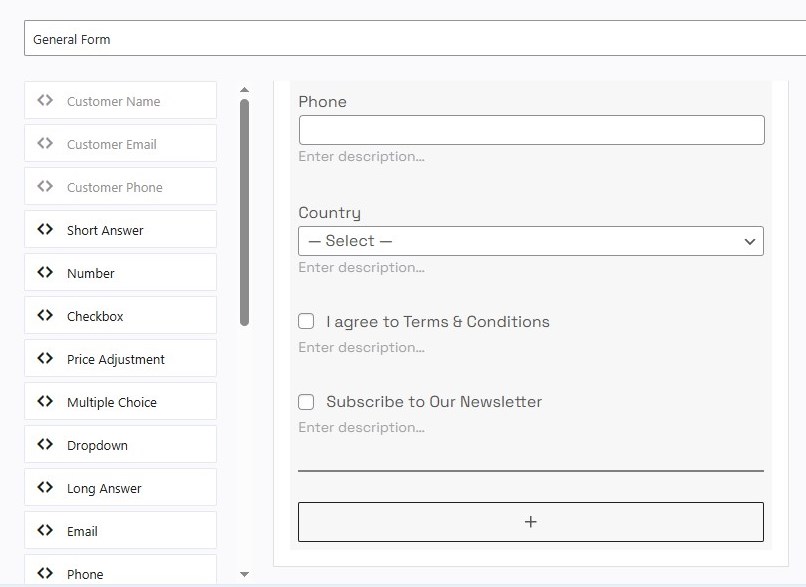
Now, let’s create unique forms for different business scenarios! You’ll find the Add New Form link inside each booking calendar WordPress.
Hourly Booking Form Example
Scenario: You rent out a photography studio by the hour. Clients need to choose a date, time, and extras such as lighting or backdrops.
Use the drag-and-drop builder to include fields relevant to photography bookings:
1. Common Fields (all rooms):
- Customer Name
- Customer Email
- Customer Phone
- Dropdown – Type of photoshoot – (Portrait, Product, Fashion, Family, Commercial)
- Number – Number of participants
- Long Answer – Special requests or setup instructions
- Multiple Choice – Do you need any of the following equipment? (Lighting kit, Backdrops, Tripod, Props table, and Makeup area) – adjusts the total price
- Checkbox (required) – I agree to the studio terms & conditions

2. Unique Fields (Dynamic, per room)
Loft Studio:
- Multiple Choice – Extra services (On-site assistant/Makeup artist) – adjusts the total price
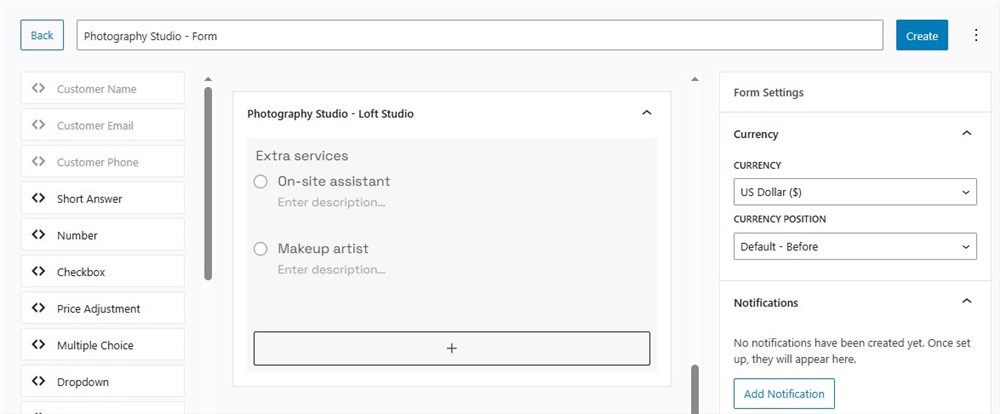
Classic Room:
- Dropdown – Backdrop Color (White/Gray/Black)
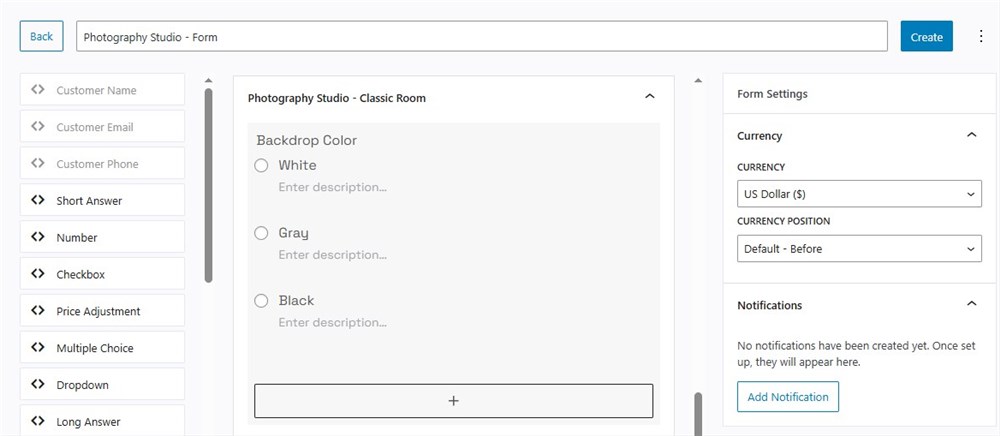
Dark Room:
- Multiple Choice – Lighting setup (LED panels/Spotlights) – adjusts the total price
- Multiple Choice – Special effects (Fog machine/Colored gels) – adjusts the total price

Daily Booking Form Example
Scenario: Multi-day car rentals for leisure or business trips. Customers book vehicles for a set number of days and choose extras like GPS or insurance in a custom booking form WordPress.
1. Common Fields (all cars)
- Customer Name
- Customer Email
- Customer Phone
- Country – Country field
- Short Answer – Pickup location
- Short Answer – Drop-off location
- Short Answer – Driver’s license number
- Long Answer – Additional comments or requests
- Checkbox (required) – I agree to Terms & Conditions

2. Unique Fields (Dynamic, per car)
Mountain Explorer (SUV):
- Multiple Choice – “Extras” (Roof rack/Tow hitch/GPS) – adjusts the total price
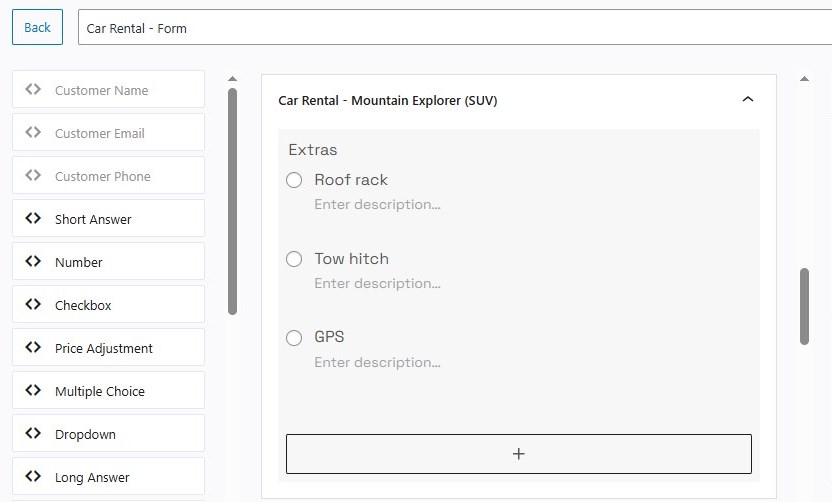
Family Cruiser (Van):
- Multiple Choice – Extras (Child seat/Extra luggage space/GPS) – adjusts the total price

Executive Elite (Luxury):
- Multiple Choice – Extras (Premium insurance/Chauffeur option/GPS) – adjusts the total price

Eco Drive (Electric):
- Multiple Choice – Extras (Charging cable/GPS/Insurance) – adjusts the total price
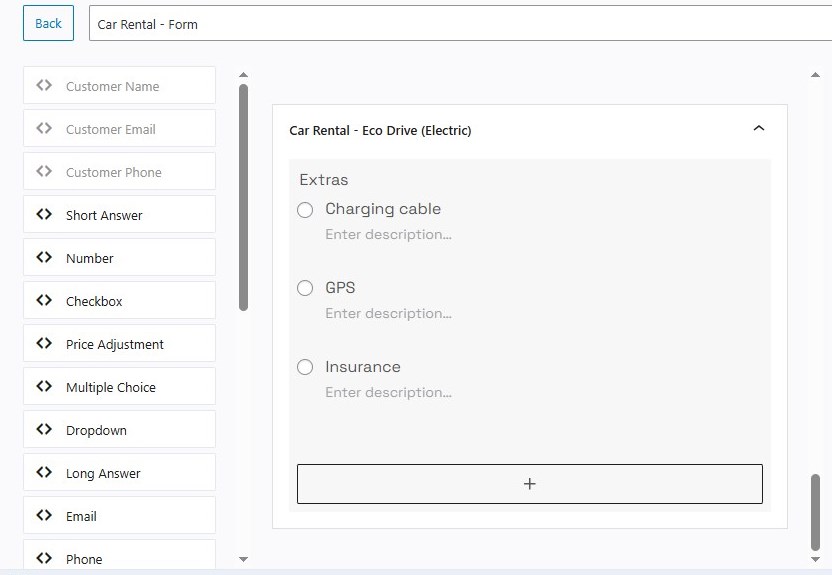
Nightly Booking Form Example
Scenario: You rent apartments nightly with the booking calendar WordPress plugin. Guests select check-in/out dates and optional services.
1. Common Fields (all apartments)
- Customer Name
- Customer Email
- Customer Phone
- Purpose of stay – Dropdown (Vacation, Business, Family, Other)
- Long Answer – Additional comments or requests
- Paragraph – Check-in after 3 PM, check-out before 11 AM. Smoking prohibited. Damage may result in extra charges.
- Checkbox (required) – I agree to Terms & Conditions
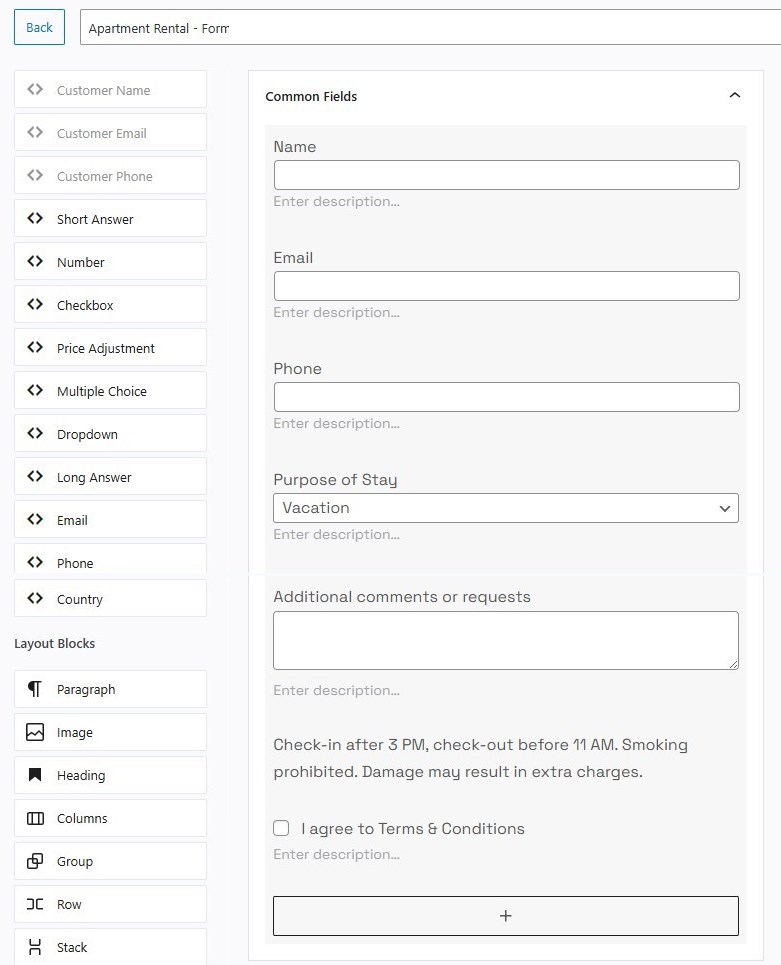
2. Unique Fields (Dynamic, per apartment)
Sunrise Studio:
- Number – Guests – adjusts the total price
- Dropdown – Preferred view (Street/Courtyard)
- Checkbox – Breakfast – adjusts the total price
- Price Adjustment – Cleaning Fee
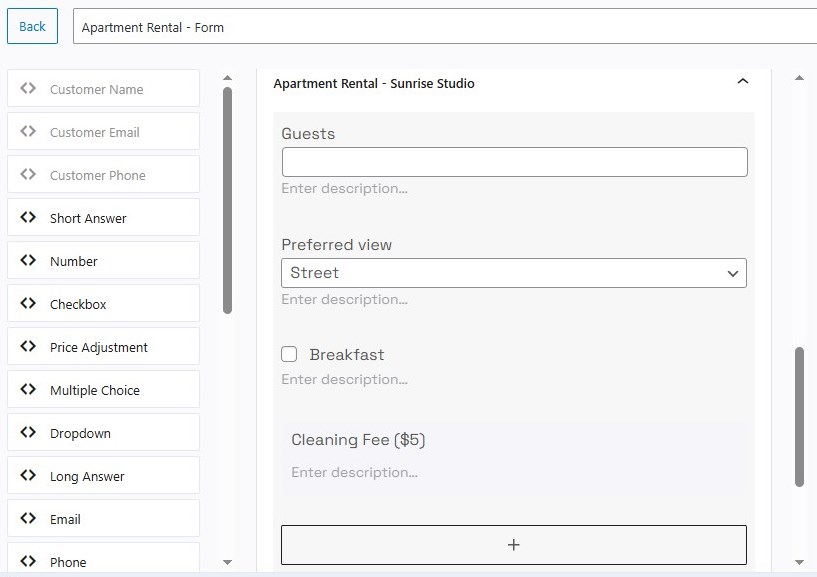
City View One-Bedroom:
- Number – Guests – adjusts the total price
- Multiple Choice – Extra Services (Breakfast/Late checkout/Airport transfer) – adjusts the total price
- Price Adjustment – Cleaning Fee
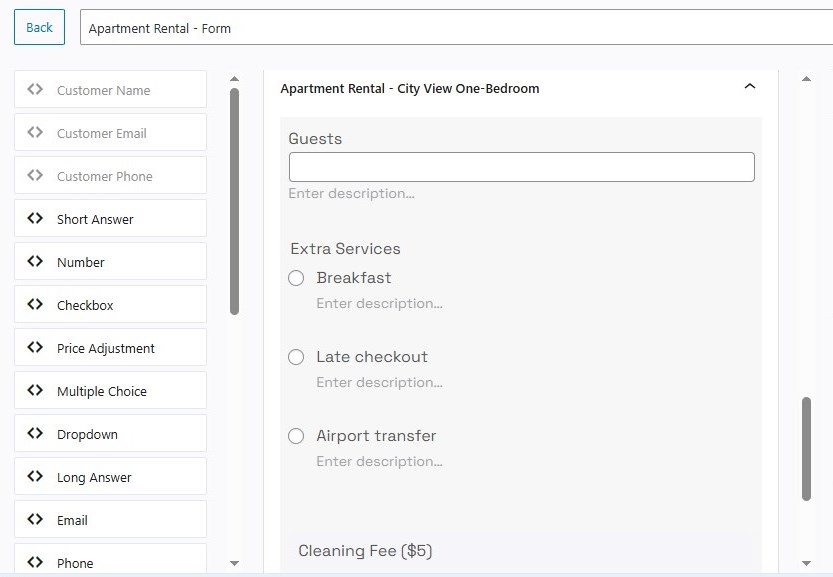
Penthouse Suite:
- Number – Guests – adjusts the total price
- Multiple Choice – Extra Services (Breakfast/Late checkout/Airport transfer/Concierge service) – adjusts the total price
- Price Adjustment – Cleaning Fee
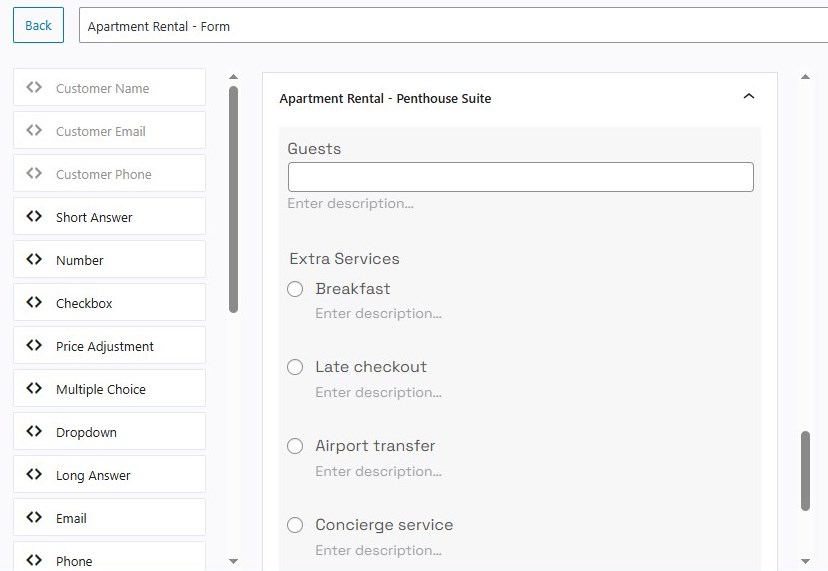
Add a WordPress Simple Booking Form: Video Walkthrough
Do you prefer watching instead of reading? In this video tutorial, Valerie from MotoPress walks you through creating a WordPress booking form for hourly, daily, and nightly rentals with the same plugin.
Concluding Remarks
And that’s it! Your WordPress booking form is ready to go live. From common fields like name and email to price-adjusted extras, you now have full control over how customers book with you.
Whether it’s a quick hourly studio session, a car rental, or an overnight stay, the MotoPress Booking Calendar keeps it simple for both you and your clients. Once everything’s automated, you can focus on growing your business but not managing schedules!
FAQ
Can I use one WordPress booking form for multiple rentals or services?
Can I charge extra fees or add-ons through the form?
What if I want different forms for each property or rental type?
